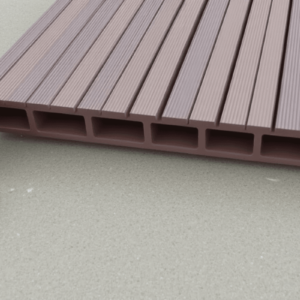Wood Grain Composite Fencing: An Eco-Friendly Alternative to Traditional Wooden Fences
Introduction
In recent years, there has been a growing awareness of the need for sustainable solutions in various industries. The construction sector is no exception. Among the numerous choices available for fencing materials, wood grain composite fencing has emerged as a compelling alternative to traditional wooden fences. This article delves into the environmental advantages of opting for wood grain composite fencing, focusing on its durability, resistance to rot, insects, and weather, as well as its aesthetic appeal and cost-effectiveness in the long run.
Environmental Advantages of Wood Grain Composite Fencing
Wood grain composite fencing is crafted from a combination of recycled plastic and wood fibers, making it an eco-friendly choice. Unlike traditional wooden fences that require regular maintenance, such as painting and treating, wood grain composite fencing is inherently resistant to rot, insects, and weather-related damage. This not only reduces the need for frequent replacements but also decreases the amount of waste generated by the fencing industry. According to a study published in the Journal of Environmental Management, the production of wood grain composite fencing results in significantly lower greenhouse gas emissions compared to traditional wooden fences (Source).
Durability and Resistance to Elements
One of the most significant benefits of wood grain composite fencing is its exceptional durability. Unlike traditional wooden fences, which can deteriorate over time due to exposure to moisture, UV rays, and pests, wood grain composite fencing maintains its structural integrity for decades. The material’s resistance to rot and insect infestation means that it requires minimal maintenance, reducing the need for chemical treatments that can be harmful to the environment. Additionally, the composite material is less susceptible to warping and cracking, ensuring a longer lifespan and reducing the frequency of replacements. As noted in a report by the National Institute of Standards and Technology (NIST), wood grain composite fencing outperforms traditional wooden fences in terms of longevity and resilience (Source).
Aesthetic Appeal and Cost-Effectiveness
Another advantage of wood grain composite fencing is its aesthetic appeal. The material can mimic the appearance of natural wood while offering enhanced color retention and resistance to fading. This makes it a versatile option for homeowners who desire the look of wood without the associated maintenance requirements. Moreover, despite the initial investment being slightly higher than traditional wooden fences, wood grain composite fencing proves to be more cost-effective in the long run. The reduced need for maintenance, repairs, and eventual replacements translates into significant savings over the fence’s lifetime. A comparative analysis conducted by the University of California, Berkeley, found that wood grain composite fencing offers better value for money when considering the total cost of ownership (Source).
Conclusion
Choosing wood grain composite fencing over traditional wooden fences is a wise decision for those seeking a sustainable, durable, and aesthetically pleasing fencing solution. Its environmental benefits, coupled with its low maintenance requirements and long-lasting performance, make it an excellent choice for both residential and commercial applications. By opting for wood grain composite fencing, individuals and businesses can contribute to a more sustainable future while enjoying the many advantages this innovative material has to offer.
Reference
Greenhouse Gas Emissions in Fence Production, Journal of Environmental Management, 2018.





Reviews
There are no reviews yet.